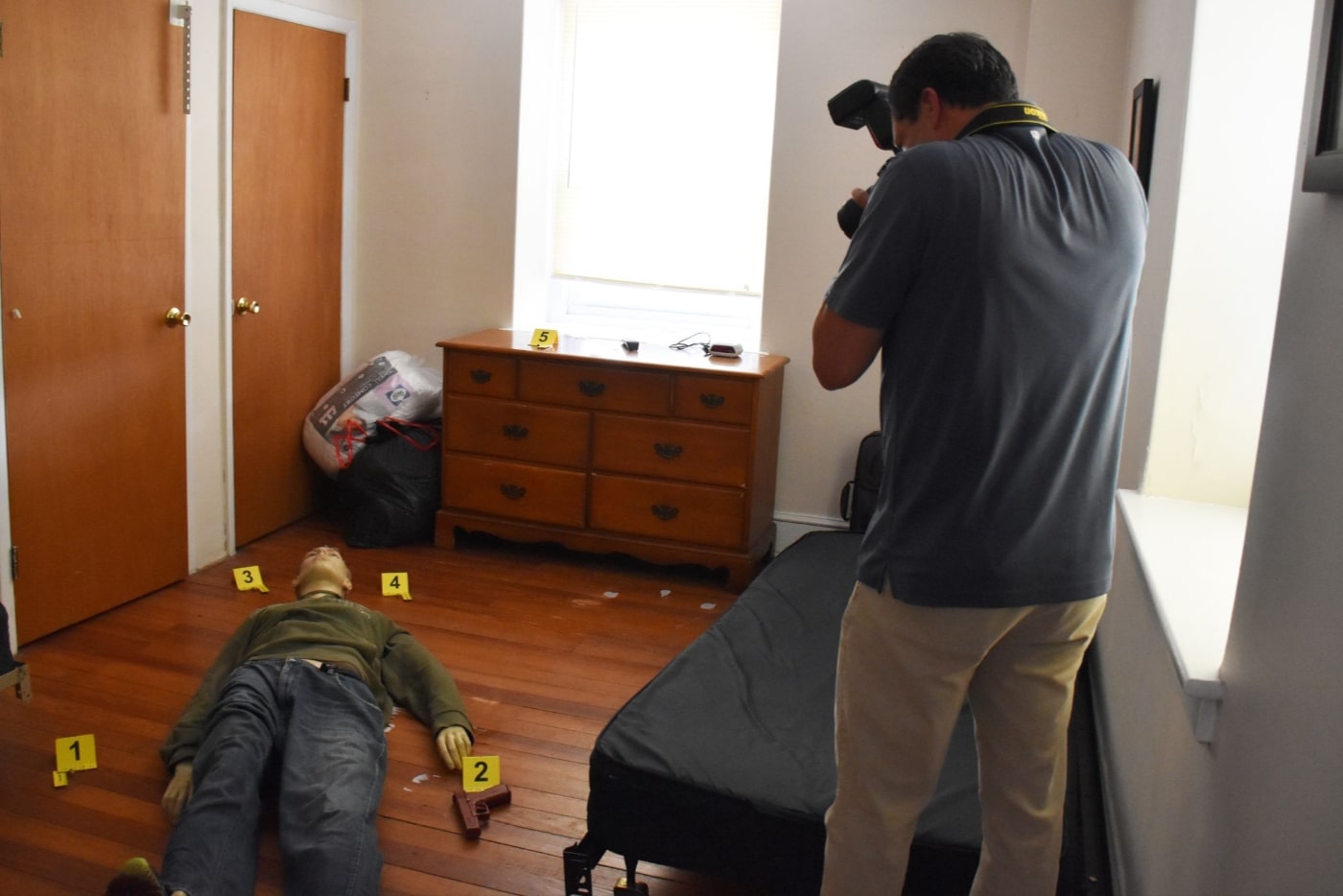GMercyU Unveils New Crime Scene House
 GMercyU has unveiled a new Crime Scene House (CSH) on campus, giving Criminal Justice students the opportunity to move beyond the classroom and into a realistic training environment. The new space also serves as a training facility for local law enforcement.
GMercyU has unveiled a new Crime Scene House (CSH) on campus, giving Criminal Justice students the opportunity to move beyond the classroom and into a realistic training environment. The new space also serves as a training facility for local law enforcement.
The three-story home has been transformed into a simulation lab for the Criminal Justice program, where students will practice criminal investigation skills from the first knock until the last application of crime scene tape. In the CSH, students will work collaboratively to collect evidence, conduct interrogations, serve warrants, and manage a crime scene.
“This Crime Scene House gives our students the unique opportunity to prepare for the realities of criminal investigation,” said Dr. Patrick McGrain, PhD, Associate Professor and Program Director of Criminal Justice at GMercyU.
“By engaging directly with scenarios in real time, they develop the critical analysis tools and technical skills needed to make a meaningful impact from the start of their careers.”
While students are trained to treat the entire house as a live crime scene, the CSH features multiple staged rooms, each designed to replicate different investigative encounters, from murder to sexual assault to drug use.
The CSH includes:
- Kitchen, bathroom, two bedrooms and an office
- A “flophouse” simulating a low-rent motel used for drug use
- Interrogation room
- Blood spatter analysis room
- Evidence area where students can analyze fingerprints and complete other investigative tasks
With cameras in every room, professors can monitor student progress and provide immediate feedback to improve investigative skills.
The property also houses a crime scene automobile, allowing students to collect evidence from a vehicle, a common practice for criminal investigators. Whether completing tire tread analysis, fingerprinting the interior, or collecting evidence hidden in secret compartments, the “crime scene car” gives the students another exciting opportunity for CSI training.
The CSH will be used across at least seven courses within the criminal justice curriculum, including Forensics: CSI, Criminal Investigations, Criminal Procedures, Police and Law Enforcement, Victimology, Juvenile Delinquency, and Sexual Deviance.
The CSH also will serve as a resource for local law enforcement. GMercyU plans to expand its use as a training site for professional development and community partnerships. Organizations interested in tours or hosting a training or event at the CSH can contact Dr. Patrick McGrain at mcgrain.p@gmercyu.edu.